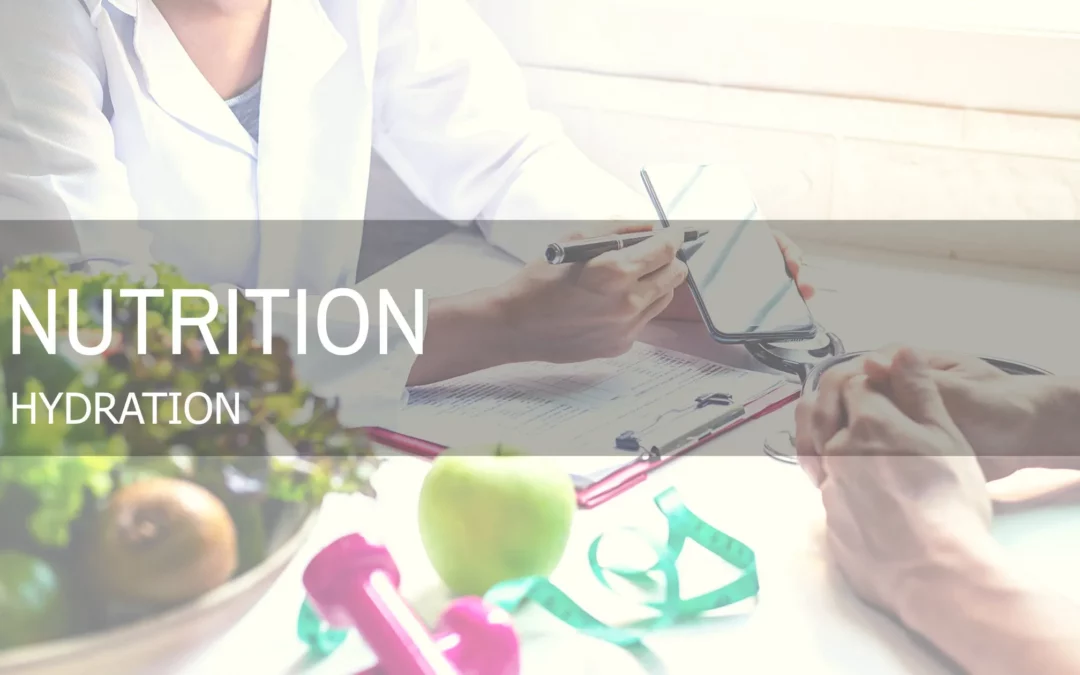Hydration
Statement: “Don’t Get Thirsty – The importance of staying hydrated”
Hydration Status:
Did you know that by the time you feel thirsty you are already slightly dehydrated? Unfortunately, the mechanism by which the body detects thirst and dehydration is slow and inefficient. This, in part, is why it is so crucial to stay on top of your water intake throughout the day. There are many things that can influence your hydration status including temperature, time in the sun, physical activity, food and beverage intake, age, frequency of urination and bowel movements and certain health issues. It is important to know how your daily activities affect your hydration levels in your body, so that you can make sure that you can compensate for it.
Importance if Water:
Staying adequately hydrated is important not only because the body is comprised mostly of water, but also because it is an important part of the function of many systems within the body. Some of these functions include, but are not limited to, temperature regulation, lubrication and cushioning of joints, protection of spinal cord and other sensitive tissues and organs and waste or toxin elimination through urination, perspiration and bowel movements. We want to make sure our bodies and all its systems are functioning optimally, so that our goals are more attainable. Whether your goal is weight loss, having more energy or even winning a race or competition, proper hydration is the first step to achieving these.
Intake Recommendations:
There are multiple ways to estimate your recommended water intake, but one easy way is to take your weight in pounds, divide that in half, and that is how much water in ounces you should be drinking. Certain beverages, (such as soda, caffeine, alcohol, juice, etc.) can act as diuretics; meaning they can cause you to excrete more water than you are taking in. To compensate for this, try to add 1 ½ ounces extra water to your daily intake for every ounce of diuretic consumed. It is also important to factor in physical activity. Make sure you start off your exercise hydrated and then rehydrate what you have lost afterwards. While actively participating in exercise try to drink 7 to 10 ounces of water every 20 minutes.
Goals:
- If drinking water is something that is difficult for you:
- Find a way to make the water more interesting, so that you can start drinking more.
- Try a couple of these examples for added flavor to your water:
- Add lemon or lime.
- Make some “Agua Fresca” (soak your favorite fruits and herbs in a pitcher of water for a few hours or overnight).
- Use an infusion water bottle with fruit or fresh cucumbers.
- Find a thermos water bottle that will keep you water cool and refreshing.
- If you are able drink water or already know how you best tolerate it:
- Focus on making sure you are getting enough to meet you base daily needs.
- Try to get at least ½ your body weight (lbs) = ounces of water
- Calculate what this is for you and then track your water intake throughout the day to see if it matches.
- If you already meet the base goal for water intake start looking at your specific activities and your diuretic intake.
- Bring a water bottle to every exercise and make sure you are following:
- 7 to 10 ounces of water every 20 minutes of physical activity.
- add 1 ½ ounces for each ounce of diuretic consumed.



